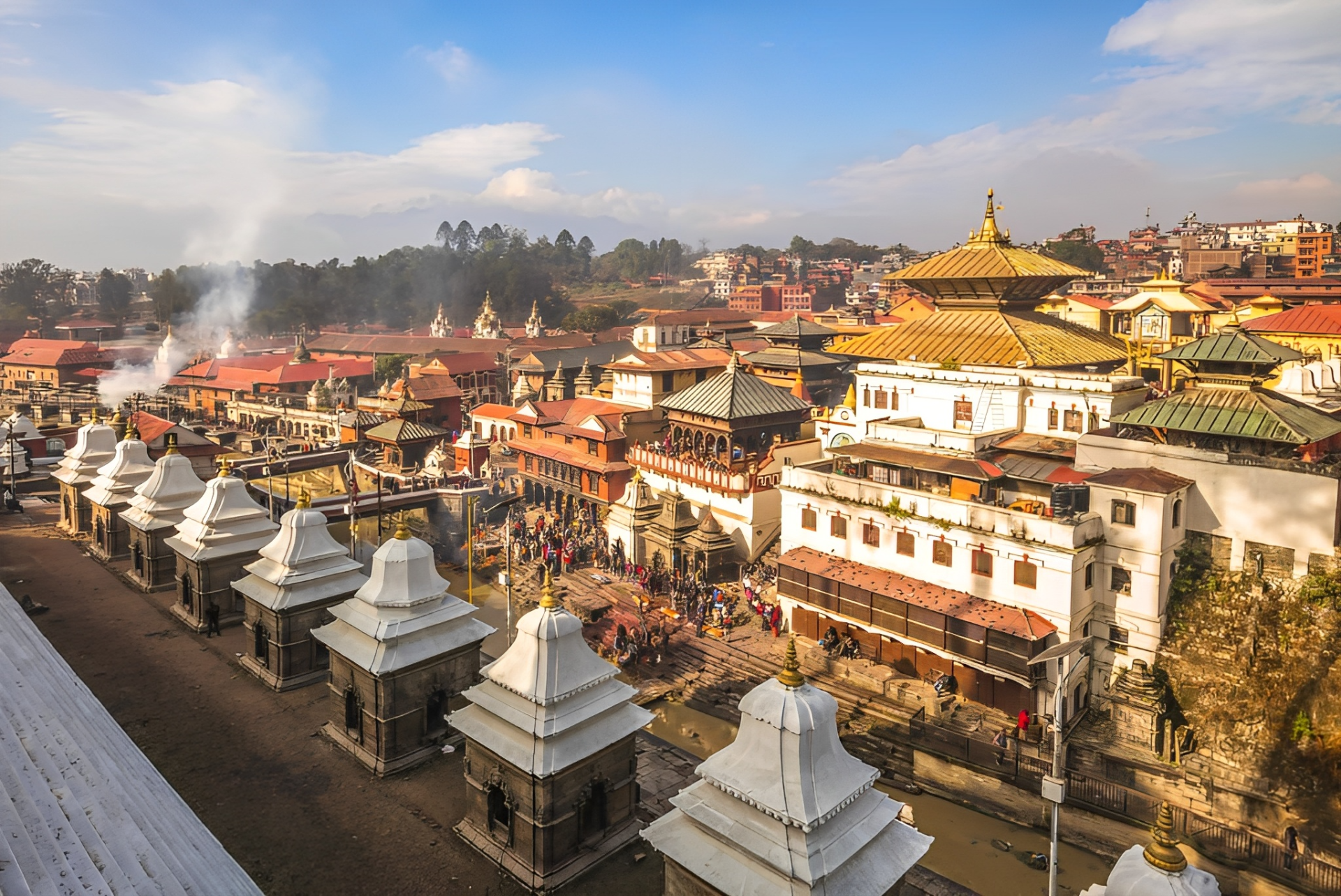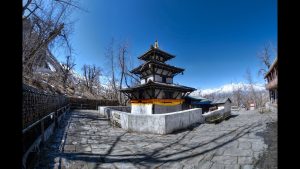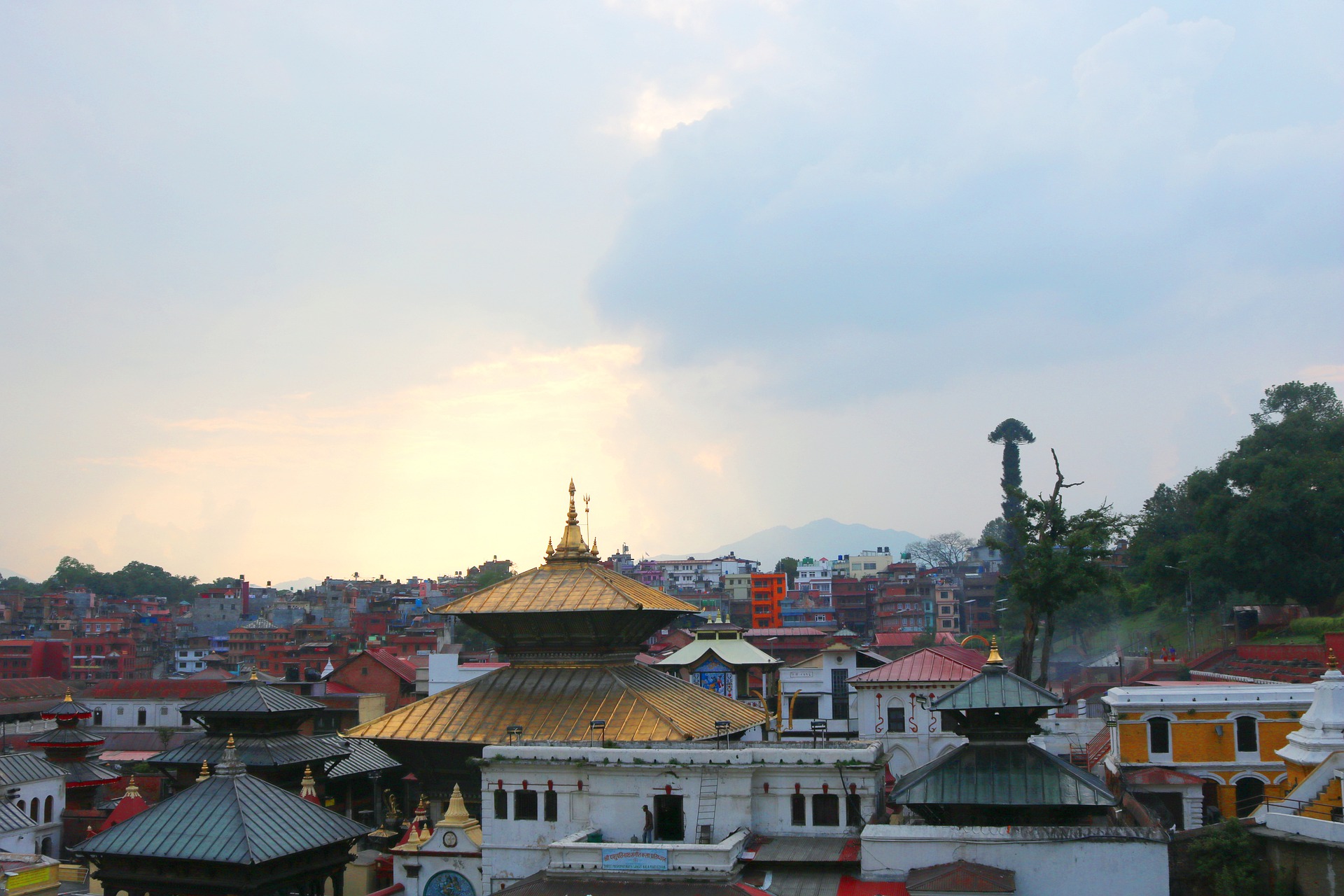Hindu temples in Nepal are nestled within the heart of the awe-inspiring Himalayas, where the very essence of this land resonates with the echoes of time. Here, amidst the majestic mountains and pristine landscapes, Hinduism has thrived for centuries, transcending the confines of a mere religion to become a vibrant way of life. Its profound influence graces Nepal’s architectural marvels, exquisite artistry, vibrant festivals, and sacred rituals, with these enchanting temples serving as living and timeless testaments to the seamless fusion of culture and spirituality.
Now, as you prepare for your sacred journey through the Land of Myths and Wonders, Nepal invites you to immerse yourself in its rich tapestry of faith and heritage. Each step you take on this Hindu Pilgrimage Tour is a step closer to discovering the spiritual treasures that lie within these ancient temples. These hallowed grounds not only beckon pilgrims but also captivate the hearts of curious wanderers. In this sacred realm, inspiration flows freely, and enlightenment waits patiently to embrace those who seek it.
Join us on this extraordinary voyage as we unveil the mystique of Nepal’s 10 must-visit Hindu temples. Each temple is a jewel, adorning the landscape with its unique charm and profound significance. Whether you seek spiritual transcendence, cultural immersion, or an escape into nature’s grandeur, these temples, like the threads of a divine tapestry, promise to weave an unforgettable tale that surpasses your wildest expectations.”
Pashupatinath Temple, Kathmandu

One of Nepal’s most sacred and iconic Hindu temples is the Pashupatinath Temple Complex in Kathmandu. It is the most famous temple of Lord Shiva, the destroyer and transformer of the Hindu trinity. It is also one of the 12 Jyotirlingas, or self-manifested lingas, of Shiva in the world. The temple complex dates back to the 5th century.
The temple complex is also a UNESCO World Heritage Site and a significant pilgrimage destination for Hindus worldwide. It attracts millions of devotees yearly, especially during festivals such as Maha Shivaratri, Teej, and Bala Chaturdashi.
The temple complex is located on the banks of the Bagmati River, considered a holy river that can purify the soul. Many Hindus believe that cremating here will help attain salvation and liberation from the cycle of rebirth. The cremation ceremonies are open to the public.
The Pashupati area houses hundreds of monkeys, cows, deer, pigeons, and dogs. The monkeys are especially notorious for their mischief and antics. They are also considered sacred animals that represent Hanuman, the monkey god and devotee of Lord Rama. The cows are also revered as symbols of prosperity and fertility. The deer are believed to be the companions of Shiva, who often roamed in the forests with them. The pigeons are regarded as messengers of peace and love. The dogs are respected as loyal guardians and protectors.
Muktinath Temple, Mustang

Muktinath Temple is one of the most sacred and revered sites for both Hindus and Buddhists, and it is also one of the highest temples in the world at an altitude of 3,710 meters. The temple is dedicated to Lord Vishnu, the preserver and protector of the Hindu trinity. Hindus believe that visiting this temple and worshipping Vishnu will free them from the cycle of rebirth and grant them moksha, or eternal bliss. Buddhists also regard this temple as a place of enlightenment and nirvana, and they call it Chumig Gyatsa, which means a hundred waters.
The temple is famous for its 108 water spouts and its eternal flame. The waterspouts are in a semi-circle around the temple and spout water from the Gandaki River, one of Nepal’s holiest rivers. The water is ice-cold, and devotees bathe under each spout to cleanse their sins and purify their souls. The eternal flame is inside the temple, and it burns continuously from natural gas. People have faith that it is a manifestation of Jwala Mai, the goddess of fire.
The temple is also part of the famous Annapurna Circuit trek, one of Nepal’s most popular and challenging treks. The trek takes you through diverse landscapes, such as forests, meadows, glaciers, and waterfalls. The trek also offers stunning views of the Himalayan peaks, such as Annapurna, Dhaulagiri, Nilgiri, and Machhapuchhre.
Manakamana Temple, Gorkha
If you are looking for a fun and thrilling way to visit a Hindu temple in Nepal, you should visit the Manakamana Temple in Gorkha. This temple is dedicated to the goddess Bhagwati, who is worshiped as the goddess of wishes. She is believed to grant the wishes of her devotees who visit her temple with faith and devotion.
The temple is located on a hilltop at an altitude of 1,302 meters. It offers spectacular views of the surrounding hills and valleys and the snow-capped peaks of Annapurna, Manaslu, and Ganesh Himal. The temple is also a historical and cultural landmark, as the king of Gorkha built it in the 17th century.
The most exciting part of visiting this temple is the cable car ride that takes you to the temple from the town of Kurintar. The cable car covers a distance of 2.8 kilometers and takes about 10 minutes. It is one of the longest cable car rides in Asia, and it offers breathtaking views of the Trishuli River and the green landscape below.
Janaki Temple (Ram Janaki Temple), Janakpur
If you know of Hindu mythology and epic stories, you should visit the Janaki Temple in Janakpur. This temple is also known as Ram Janaki Temple because it marks the birthplace of Goddess Sita (Janaki) and her marriage to Lord Rama (Ram). Sita and Rama are the main characters of the Ramayana, one of the most famous and revered Hindu epics.
The temple is a masterpiece of architecture and art, showcasing a blend of Mughal and Rajput styles. The temple is also one of the largest in Nepal, with a total area of 4.5 acres. It has three stories and 60 rooms decorated with paintings, sculptures, and carvings depicting scenes from the Ramayana. The temple also has a golden dome and a flag that flies high above the temple.
The temple is a significant pilgrimage destination for Hindus, especially during festivals such as Vivah Panchami and Ram Navami. Vivah Panchami is a festival that falls in November or December and celebrates Sita and Rama’s wedding anniversary. The festival involves grand ceremonies and processions, where devotees carry idols of Sita and Rama to different temples. Ram Navami is a festival that falls in March or April and celebrates Rama’s birthday. The festival involves prayers, chants, and offerings to Rama.
The temple is also a cultural and historical attraction for tourists, who can learn more about Nepal’s ancient history and mythology. The temple is in Janakpur, once the capital of the Mithila Kingdom, where Sita was born. The city is also known for its rich tradition of Mithila art, folk art that uses bright colors and geometric patterns to depict various themes and motifs.
Kalinchowk Bhagawoti Temple, Dolakha
One of the most adventurous and rewarding Hindu temples in Nepal is the Kalinchowk Bhagawati Temple in Dolakha district of eastern Nepal. This temple is dedicated to Goddess Bhagawati, who is worshipped as the goddess of wishes. She is believed to have miraculous powers and grant the wishes of those who visit her temple with faith and devotion.
Kalinchowk temple is located on a hilltop at an altitude of 3,842 meters and offers stunning views of the Himalayas, such as Kanchenjunga, Makalu, and Everest. It is also a part of the Gaurishankar Conservation Area, which is home to many rare and endangered species of flora and fauna.
The temple is a major pilgrimage destination for Hindus, especially during festivals such as Chaitra Dashain, Dashain, and Navratri. The temple is also known for its animal sacrifices during festivals, such as goats, chickens, ducks, pigs, and buffaloes. Kalinchowk temple is also a part of the famous Kalinchowk Trek, which is one of the most popular and challenging treks in Nepal. The trek takes you through diverse landscapes, such as forests, meadows, glaciers, and waterfalls.
Budhanilkantha Temple, Kathmandu
One of Nepal’s most impressive and unique Hindu temples is the Budhanilkantha Temple in Kathmandu. This temple is dedicated to Lord Vishnu, the preserver and protector of the Hindu trinity. The temple is famous for its giant reclining statue of Vishnu lying on a bed of snakes in a pool of water.
The statue is 5 meters long and made of black stone. It depicts Vishnu in his cosmic sleep, or yoga nidra, as he dreams of the creation and destruction of the universe. The statue intricate details or carving, such as the four arms of Vishnu holding his symbols: a conch shell, a discus, a lotus, and a mace. It is surrounded by 11 hooded snakes, or nagas, who protect Vishnu from evil forces.
The statue is more than 1,500 years old and a self-manifested image of Vishnu. It is also a miracle of art and engineering, as it floats on the water despite its weight and size. People believe the water in the pool to come from a sacred spring from Lake Gosainkunda, another holy site for Hindus.
The temple is also a cultural and historical attraction for tourists, who can learn more about Nepal’s ancient history and mythology. The temple is also a UNESCO World Heritage Site and a part of the Kathmandu Valley Cultural Landscape.
Dakshinkali Temple, Kathmandu Valley
To explore the darker and more mysterious side of Hinduism in Nepal, visit the Dakshinkali Temple in the Kathmandu Valley. This temple of Kali, one of the most fierce and powerful forms of Goddess Parvati. She is the goddess of death, destruction, and time.
The temple is in a remote and scenic valley, surrounded by green hills and forests. The temple is also near a river where devotees can dip or perform rituals. The idol has four arms, holding a sword, a trident, a severed head, and a blood bowl. She also wears a garland of skulls and a skirt of severed arms.
The temple is famous for animal sacrifices during festivals like Dashain and Navratri. The temple witnesses large-scale offerings of goats, chickens, ducks, pigs, and buffaloes to appease Kali’s bloodlust. Priests perform the sacrifices of animals and offer their blood to the goddess.
Pathibhara Temple, Taplejung
If you want a less-known but equally impressive Hindu temple in Nepal, visit the Pathibhara Temple in Taplejung. It is the temple of Goddess Pathibhara, the wish-fulfilling goddess.
The temple is located in a remote and scenic spot in Taplejung, one of Nepal’s easternmost districts. The temple lies at 3,794 meters and offers stunning views of the Himalayas, such as Kanchenjunga, Makalu, and Everest. Rhododendron forests and alpine meadows surround the temple, adding to its beauty and charm.
The temple is a significant pilgrimage destination for Hindus, especially during the annual Pathibhara Yatra festival, which falls in October or November. This festival is a major cultural and religious event for the local people of the Limbu ethnic group. The festival involves walking for several days across rugged terrain, carrying offerings such as sheep, goats, gold, silver, and food items. The festival also involves rituals such as dancing, singing, and praying to the goddess.
Tal Barahi Temple, Fewa Lake, Pokhara
Tal Barahi Temple in Pokhara is located on an island in Fewa Lake, one of Nepal’s most popular tourist attractions. The temple is dedicated to Goddess Barahi, a boar-faced incarnation of Goddess Parvati.
The temple is small and straightforward, with a pagoda-style roof and a white dome. It houses a stone idol of Barahi, depicted with four arms, holding a fish, a lotus, a discus, and a conch shell. She adorns with jewelry and flowers. People worship her as the protector of the lake and its inhabitants.
The temple has serene and picturesque surroundings of Fewa Lake, which covers an area of 4.43 square kilometers. The lake reflects the majestic peaks of Annapurna and Machhapuchhre on its calm surface. The lake also offers recreational opportunities like boating, fishing, cycling, paragliding, or hiking.
Halesi Mahadev, Khotang
Another hidden gem of Hinduism in Nepal is the Halesi Mahadev Temple in Khotang district of eastern Nepal. It’s a Lord Shiva temple. The temple lies inside a natural cave which was an abode of Shiva while hiding from the demon Bhasmasura.
The temple is a sacred pilgrimage site for Hindus, Buddhists, and Kiratis. Hindus associate the temple with one of the 12 Jyotirlingas, or self-manifested lingas, of Shiva in the world. Buddhists consider the temple a sacred place associated with the legend of Padmasambhava, the founder of Tibetan Buddhism. Kiratis worship Halesi as an ancestral deity of their community.
The temple is famous for animal sacrifices during festivals such as Maha Shivaratri, Teej, and Bala Chaturdashi. The temple is famous for its miraculous healing powers and wish-fulfilling abilities. Many devotees visit the temple to seek blessings from Shiva for their health, wealth, and happiness.
Conclusion
We have reached the end of our tour of Nepal’s 10 must-visit Hindu temples in Nepal. We hope you have enjoyed this blog and learned more about the significance and beauty of these temples. These temples are not only places of worship but also showcases of history, mythology, and craftsmanship. They are also sources of inspiration and enlightenment for pilgrims and visitors alike.
Nepal is a country that has a rich and diverse religious heritage, and these temples reflect that. Whether looking for a spiritual experience, a cultural immersion, or a scenic adventure, these temples will surely satisfy your curiosity and expectations.
If you plan to visit Nepal, we encourage you to explore its spiritual side and experience its cultural wonders. You will not regret it.

